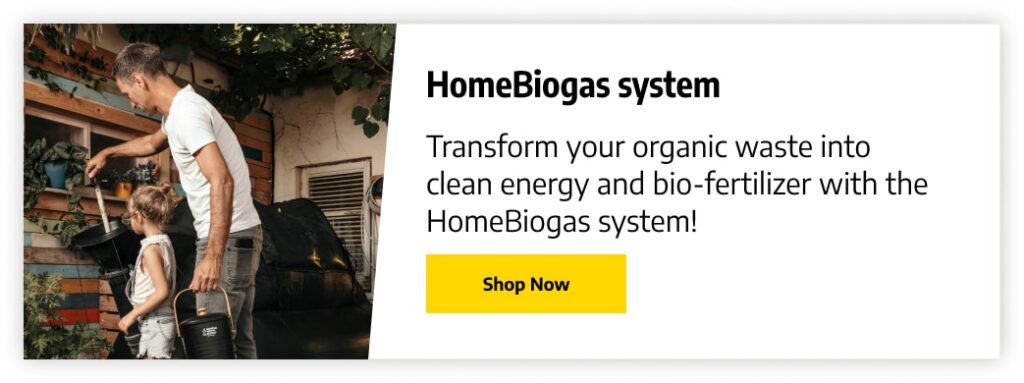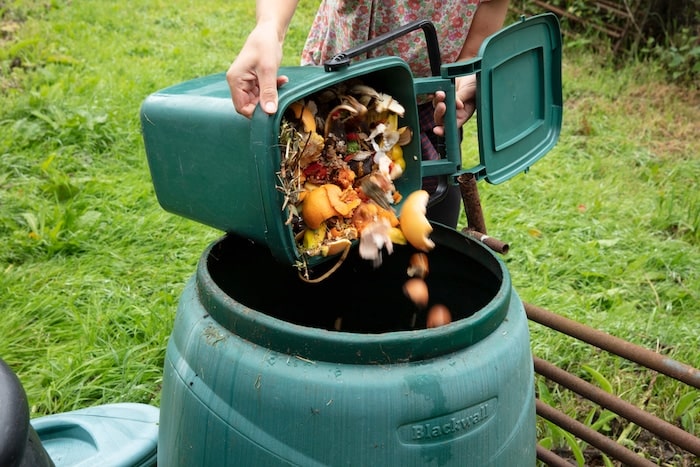
What is an Organic Waste Composter?
An organic waste composter is a device that turns your food waste into compost faster. If you’re already backyard composting with a compost pile, think of it as the alternative for cleaner, more effective composting.
It’s not just for farmers or gardeners. Anyone who wants to reduce the amount of trash they produce will find a food waste converter useful.
The composter regulates temperature, moisture, and aeration so microorganisms inside thrive and break down organic materials efficiently. The process inside is still 100% natural, so all the finished compost is organic and can support plant growth.
The organic waste converter acts as a facilitator, optimizing the composting process without introducing any synthetic or harmful elements.
Benefits of Using a Food Waste Composter
- Less waste ends up in landfills to generate greenhouse gases.
- The compost maintains a healthy soil and reduces the need for chemical fertilizers in agriculture.
- Composting food waste at home or on a larger scale reduces waste disposal costs.
- Organic waste composters manage odors and keep pests at bay.
- Composters prevent the leaching of pollutants into groundwater.
- Composting encourages individuals to be more mindful of waste generation and promotes responsible consumption.
3 Effective Organic Waste Composting Techniques
When looking for home composting solutions to recycle fruit and vegetable scraps, you want to focus on one of three techniques — aerobic digestion, worm composting, and anaerobic digestion.
Aerobic composting means that the process takes place in the presence of oxygen. You can easily break down organic matter in a confined environment in your backyard. The systems are popular because they can hold various organic materials. Moreover, they come in all shapes and complexity levels, making aerobic digestion suitable for small-scale home composting and large-scale waste management operations.
Aerobic systems require proper aeration and moisture management to function correctly. Temperature control inside the composter is necessary to accelerate decomposition.
Vermicomposting uses earthworms to power the decomposition process. Redworms (Eisenia fetida) are highly efficient and produce a fine-textured, nutrient-rich compost that improves soil structure and promotes plant growth. Worm composting is a slower process than aerobic composting. Still, it’s ideal when you have limited space or must compost indoors — the system can be so compact that it fits in kitchens, garages, or even under sinks.
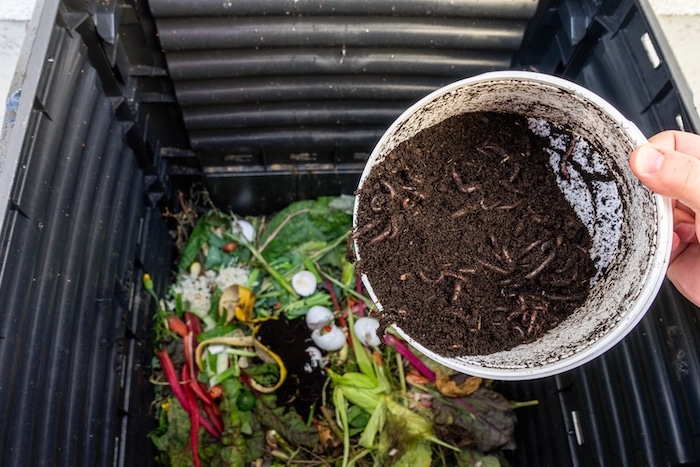
Anaerobic digestion involves microorganisms that thrive in oxygen-free environments, so the process can only occur in sealed containers. The anaerobic bacteria eat kitchen leftovers and other organic matter and produce biogas. Once captured, it can become a renewable energy source for heating, electricity generation, or cooking. Besides biogas, anaerobic systems make digestate, a nutrient-rich fertilizer that can support your gardening efforts.
Types of Home Composting Systems for Organic Waste
Aerobic Composting Systems
- Open compost piles
- Static compost piles
- Composting bins
- Tumbler composters
- Green cone composters
- Hot rot composters
Vermicomposting
- Worm bins (DIY or commercial units)
- Worm towers
Anaerobic Composting Systems
- Anaerobic chambers
- Biogas digesters
- Bokashi composters
- Septic tanks
How to Choose the Right Organic Waste Composter
It all starts with how much organic waste you generate. A small household or one with limited space only needs a compact composter, such as a countertop bin or small-scale worm bin. An outdoor compost bin or tumbler with greater capacity is better for large families or small farms. On the other hand, commercial or industrial operations dealing with substantial waste volumes may require larger-scale composting systems.
The composting method is also crucial when deciding what waste composter works best for your needs. Aerobic systems and biodigesters are suitable for various organic materials but usually require well-ventilated outdoor space. Vermicomposting and Bokashi buckets are better for indoor locations. Local regulations for organic waste management could also influence your decisions, so research and compare different products and brands to choose a compliant device.
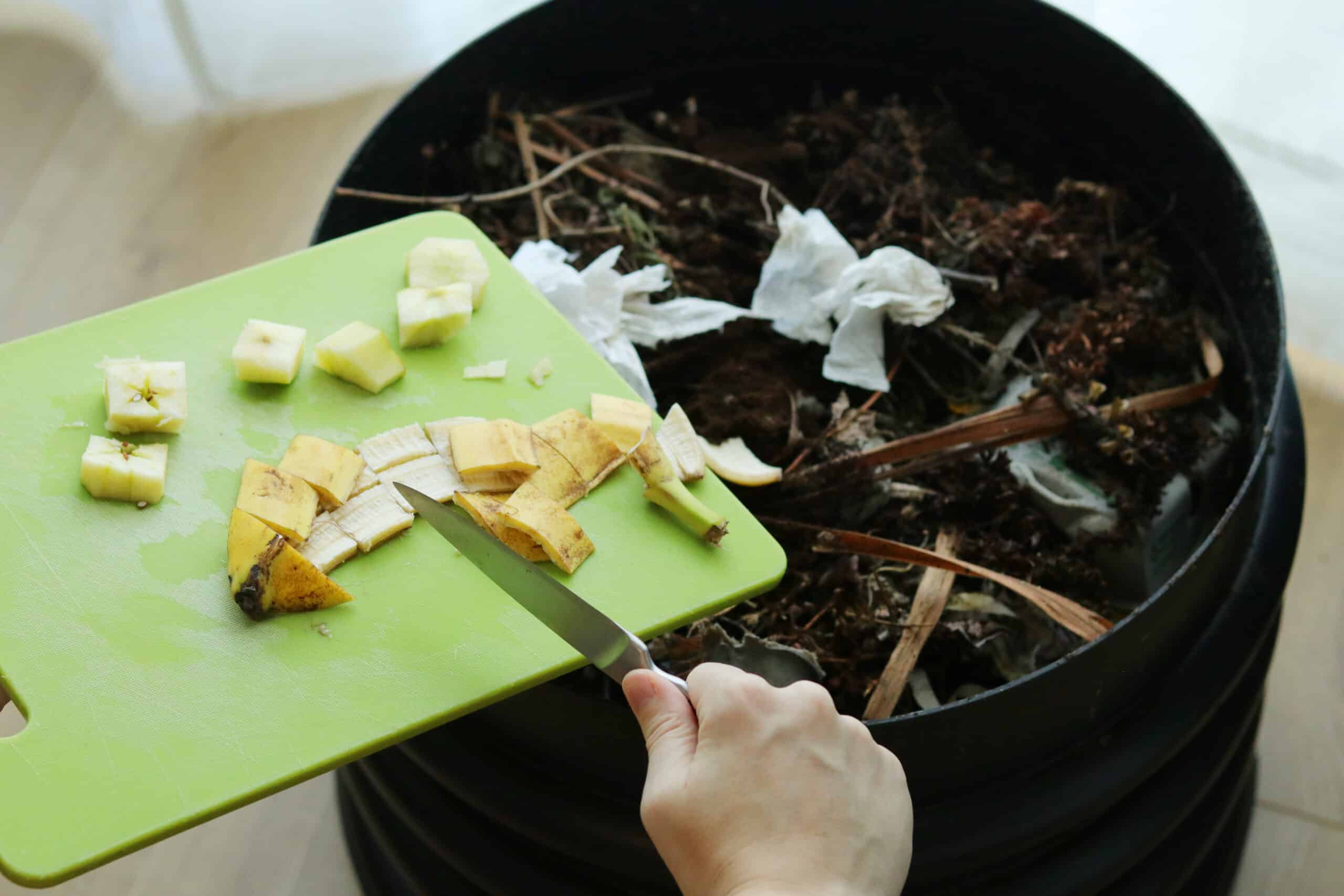
Vermicomposting and Bokashi buckets are better for indoor locations.
Setting Up and Using an Organic Waste Composter
How to set up a food waste composting machine for home
Step 1. Choose a spot with easy access and enough space for maintenance and emptying. It should be level, well-drained, and under partial sunlight. If you opt for a worm bin indoors, find a place away from direct light but still easily accessible.
Step 2 (for vermicomposting). Prepare the area at the bottom using a bedding material like shredded newspaper or cardboard.
Step 3. Collect a mix of organic materials, including kitchen scraps (fruit and vegetable peels, coffee grounds, eggshells), yard waste (leaves, grass clippings), and brown materials (dry leaves, straw, shredded newspaper).
Step 4. Layer green (nitrogen-rich) and brown (carbon-rich) materials, starting with brown, carbon-rich material. Maintain a balanced carbon-to-nitrogen (C: N) ratio by alternating layers.
How to keep the organic waste composter working
- Keep the composter covered to prevent pests and bad smells.
- Turn or mix the compost materials regularly to introduce oxygen.
- Maintain proper moisture levels, like a wrung-out sponge, by adding water as needed.
- Monitor inside temperature to ensure it stays between 120°F and 160°F (49-71°C).
- Harvest the compost when it’s crumbly and earthy-smelling.
- Replace any worn-out or damaged parts of the bin or tumbler. In worm bins, provide the worms with bedding and food and remove any excess moisture.
Troubleshooting Common Composting Issues
Ensure proper aeration and moisture management for a bad smell in your compost bin.
- Turn or mix the compost to introduce oxygen and break up any compacted layers.
- Check the moisture levels; if the compost is too wet, add dry browns like leaves or shredded newspaper to improve aeration and absorb excess moisture.
- Avoid adding materials that are too wet or contain a high moisture content, such as melon rinds or food scraps with excessive liquid.
- For ammonia odors, add more carbon-rich materials.
Follow these steps to deter pests:
- Keep the composer covered all the time.
- Ensure your compost pile is well-aerated and moist enough.
- Don’t add meat, dairy products, or oils to the composter.
To support the composting process when it slows down:
- Turn or mix the compost regularly to provide oxygen to the microbes.
- Check the carbon-to-nitrogen (C: N) ratio in your compost.
- Verify that the compost pile has the correct moisture content and add water or dry browns as necessary.
- Shred or chop large materials because small pieces decompose faster.
To combat excessive mold:
- Improve aeration.
- Add more browns to absorb excess moisture.
Using Compost from an Organic Waste Composter
Compost enhances soil structure, promotes nutrient retention, and fosters beneficial microbial activity. When you mix it in garden beds, it acts as a slow-release fertilizer, releasing essential nutrients over time. Compost helps retain soil moisture, suppress weeds, and regulate soil temperature when used as a top dressing or mulch around trees and shrubs.
Fresh compost can become nutrient-rich compost tea, an excellent liquid fertilizer for garden and potted plants. Mix compost with water and apply it to plants as a foliar spray. Compost tea provides an immediate nutrient boost and enhances plant resistance to diseases.
Promoting Sustainable Habits and Educating Others
Composting is a simple way to reduce a household’s carbon footprint. As you produce less trash, fewer resources are necessary to manage it, reducing greenhouse gas emissions and leading to energy savings and lower pollution risks.
Besides managing your waste at home, sharing knowledge about how to compost food waste can inspire your friends and neighbors. Something as simple as talking about your
food waste composter can help further reduce waste, conserve resources, and build a more sustainable future.
FAQs:
- Is organic waste the same as compost?
No. Organic waste is the material that can become compost inside a food waste composter through a series of biological and chemical transformations.
- How does an organic waste composting machine work?
Temperature and aeration control systems maintain ideal composting conditions inside the machine to support microbial activity. Microorganisms break down the organic materials, generating heat. The device also controls moisture levels, allowing you to optimize parameters. Once primary decomposition occurs, the resulting compost is typically moved to a maturation area to complete the curing process.
- What are examples of compostable organic waste?
Most composters can manage food scraps (including bread, pasta, rice, and other grains), coffee grounds, tea leaves, eggshells, leaves, nutshells, grass clippings, small yard waste, straw, hay, wood chips, sawdust, cardboard, and other organic materials. A worm composter can also handle small amounts of pet waste.
HomeBiogas Solutions
HomeBiogas offers a compact and user-friendly biodigester for management of organic waste. It transforms kitchen scraps, food leftovers, and animal manure into clean cooking gas and rich Bio-fertilizer.
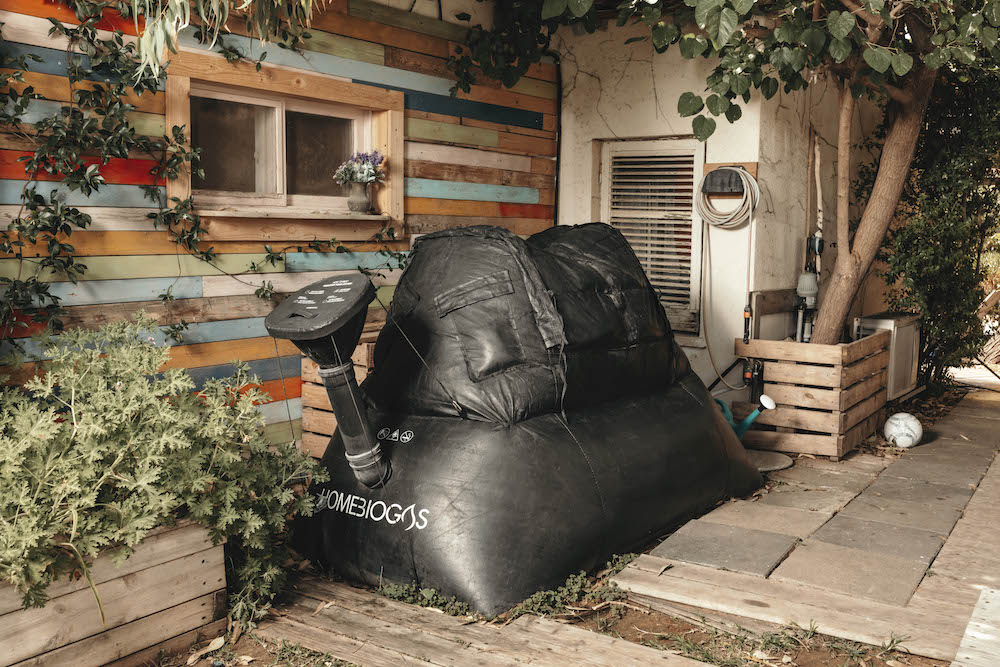
HomeBiogas systems come in multiple sizes and are designed with simplicity in mind, making them suitable for urban and rural households. They come with easy-to-follow installation instructions and require minimal maintenance.
Biogas is a renewable energy source that can be used for cooking and heating, leading to significant cost savings on cooking fuel. In addition to biogas, HomeBiogas systems produce nutrient-rich liquid organic fertilizer known as Bio-fertilizer, which can enhance soil fertility and promote plant growth.
HomeBiogas also provides educational resources and support to help users maximize the benefits of their systems.
Summary
A food waste converter is an excellent tool for managing your trash at home, so you send fewer organic materials to landfills, where they only generate greenhouse gases. When composted, the waste becomes a natural soil conditioner, a valuable resource for sustainable agricultural practices. And, if you’re ready to experiment with biogas production, your taste can provide the fuel you need for cooking.
Whether you’re a gardener or someone who wants to do their part for the planet, consider incorporating an organic waste composter into your daily routine. It’ll improve your garden’s health and nurture a more sustainable way of life.




